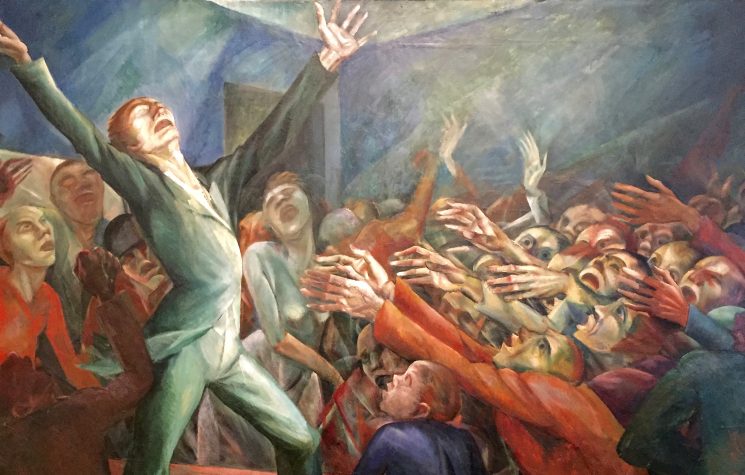Modern identitarianism was born directly from the offices of the Central Intelligence Agency with the aim of combating revolutionary tendencies within the popular masses around the world.
❗️Join us on Telegram![]() , Twitter
, Twitter![]() , and VK
, and VK![]() .
.
Contact us: info@strategic-culture.su
In 1953, John McCloy, former U.S. Under Secretary of War, former President of the World Bank and former High Commissioner in Germany, took over as president of the Ford Foundation. In this last role, McCloy provided cover for numerous CIA agents. It was he who, as president of the foundation, ensured that the agency’s interests were met, creating an internal committee to deal specifically with the CIA, composed of himself and two other foundation executives. “They would check with this specific committee and, when it was judged to be a reasonable thing, that did not go against the long-term interests of the Foundation, the project was handed over to internal staff and other executives of the house [without that they] were aware of the origins of the proposal”, said McCloy’s biographer, quoted by Frances Stonor Saunders in her book “Who Paid the Piper? The CIA and the Cultural Cold War”.
“Once this arrangement was established,” the author continues, “the Ford Foundation was officially engaged as one of the organizations that the CIA could mobilize in the political war against communism. The foundation’s archives reveal a wealth of joint projects” (p. 160).
The Ford Foundation has always been infested with CIA agents, from the highest to the lowest levels of the entity. Some of its presidents, such as Paul G. Hoffman (the entity’s first president), John McCloy and McGeorge Bundy, were important U.S. government officials and worked directly with the CIA.
In September 1950, the Ford Foundation’s charter of principles was established, which remains in force to this day. Known as the Gaither Report (because he was responsible for its preparation), it presupposed “investments in institutions, new theories [our emphasis], publication channels and training of personnel and professional elites in Social Sciences”, highlights Wanderson Chaves, doctor in History by the University of São Paulo, citing the Report (Revista Crítica Histórica, Year VI, n° 11, July/2015, p. 234). The report itself stipulated intrinsic collaboration with the State Department and the CIA.
One of the fundamental centers of action of this Ford Foundation policy has since then been universities. Among the main efforts of this collaboration was the establishment of “long-term education and training of political elites for the ‘undeveloped’ areas of the world, so that they could form national and international executive boards in the future”. In order to improve the image of the United States in the world in a “Cold War” scenario, for example, activities were put into practice that aimed to manipulate the meaning of the struggle of black people. “It was proposed that racial conflicts, addressed in literature as a drama of North American social tensions, were reworked, especially academically, to be presented and publicized as a healthy expression of the improvement of the national public sphere and, hence, the potential of its democratic philosophy” (p. 236).
Thus, what we can consider as the embryo of modern identitarianism emerged. And it was born directly from the offices of the Central Intelligence Agency with the aim of combating revolutionary tendencies within the popular masses around the world. In recent decades, the racial issue has ceased to have a social class character and has become a cultural thing: racism does not exist because its victims traditionally were from lower social classes, whose labor force was exploited by the upper classes — it exists because a culture was created within society, that is, the culprit for it is not an economically oppressive social class that dominates society, but rather society as a whole, including its poor and exploited members. Therefore, the enemy to be fought is not the exploiters of the entire people, the bourgeoisie and its international expression (imperialism), but ordinary citizens and, ultimately, the exploited themselves. This policy, therefore, only serves to perpetuate the oppression imposed on all people by the ruling class, and in fact does not combat racism at all.



































